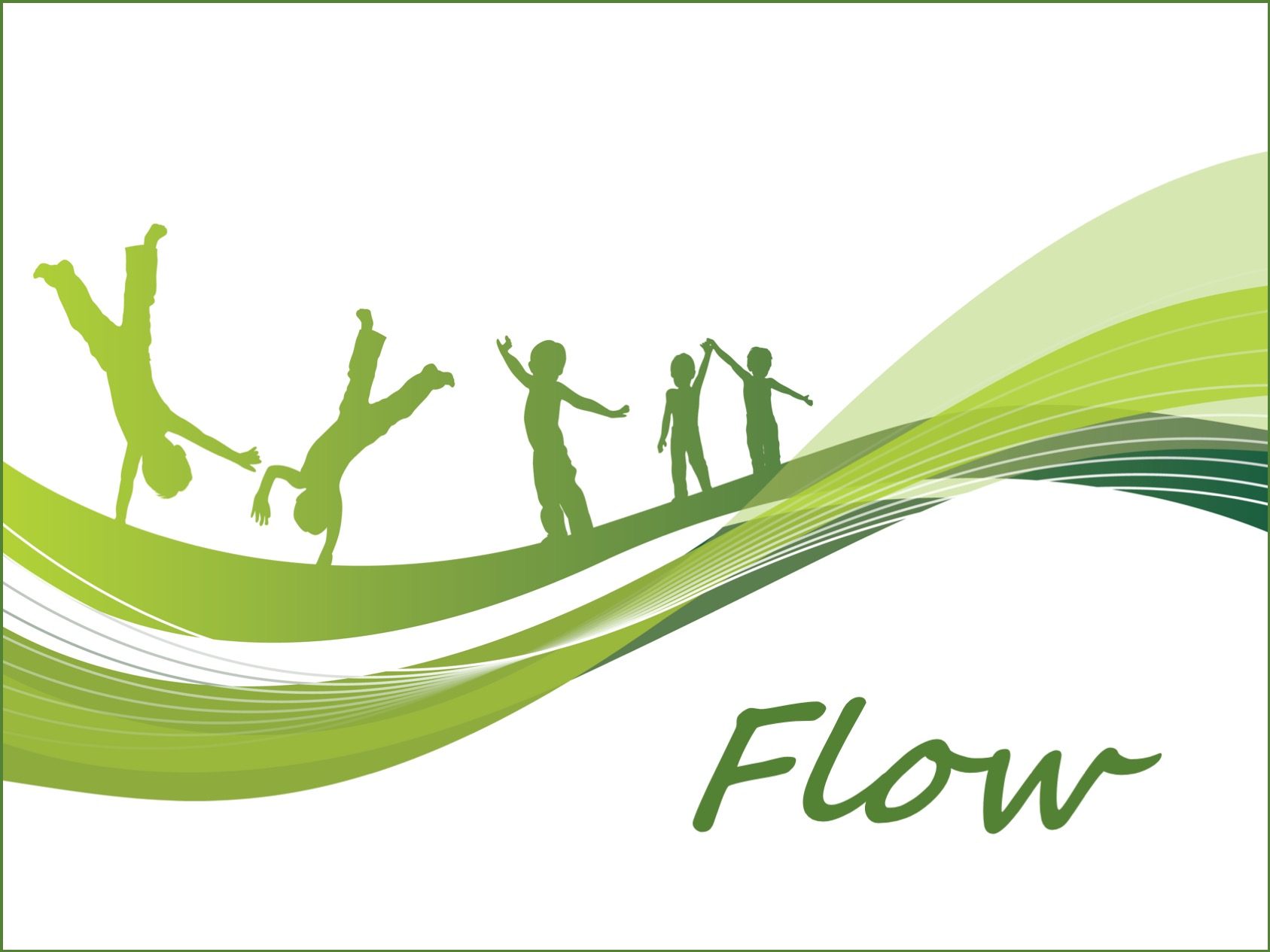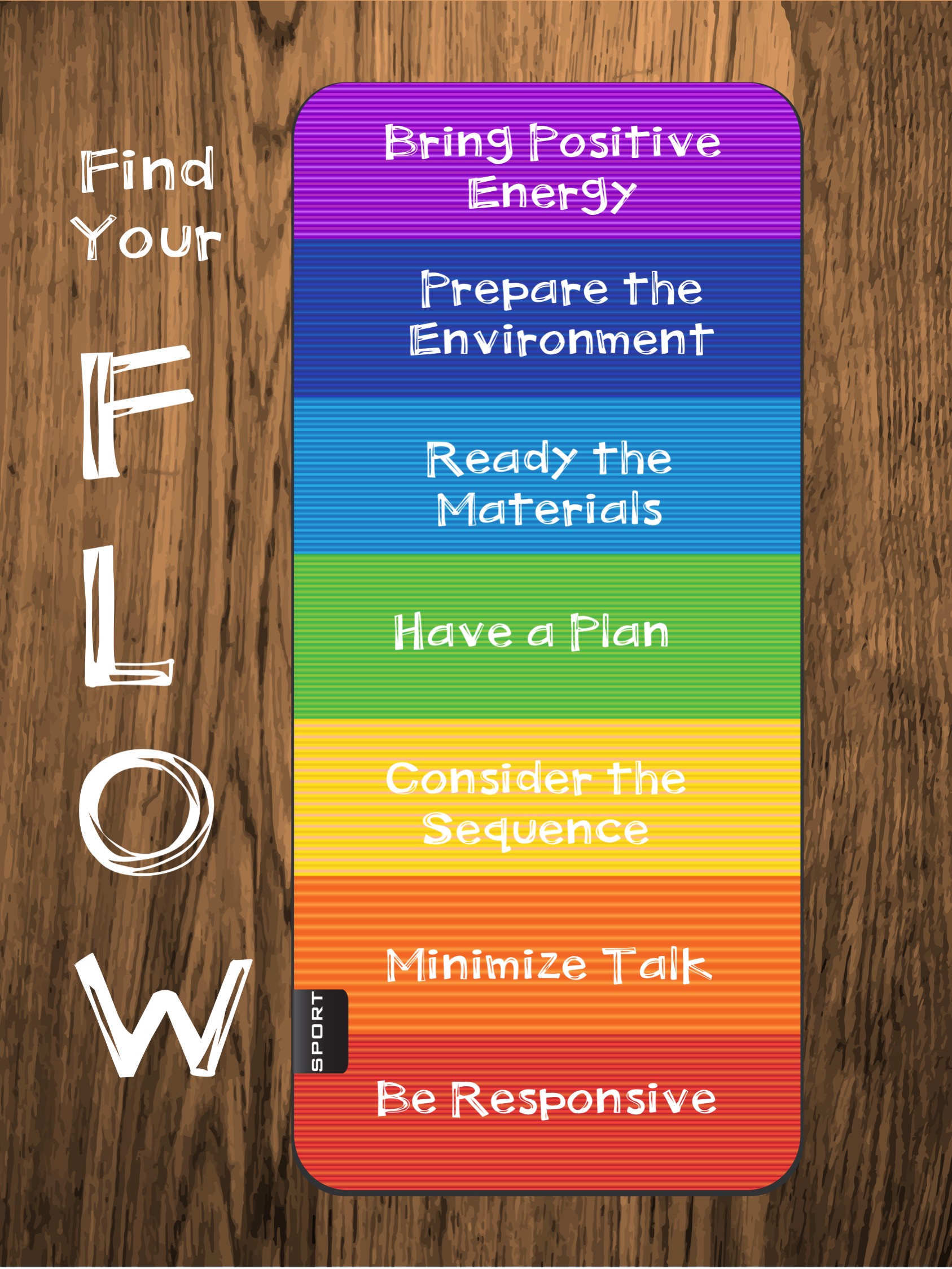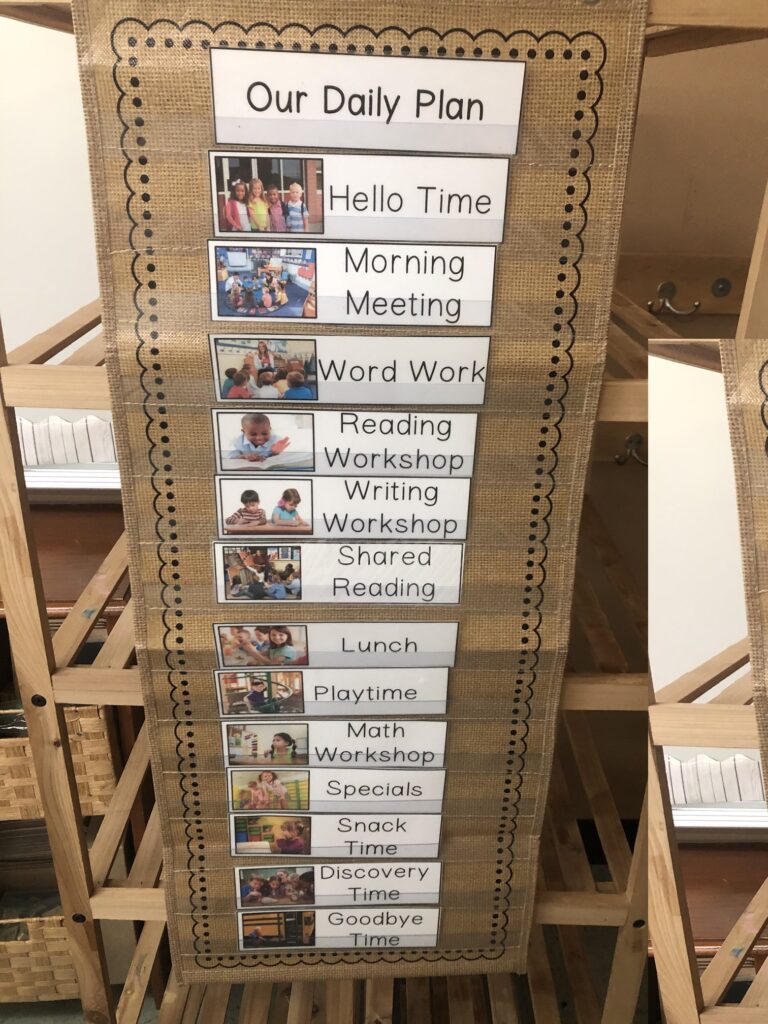Inside: Is your kindergarten day lacking a rhythmic flow? Find out what an effective yoga class can teach you about creating more flow in your kindergarten day. And be sure to download the Daily Plan Toolkit at the end of this post to help you get your kindergarten day up and running smoothly.
Yoga and the Kindergarten Day
What does a great yoga class and a smooth-flowing kindergarten program have in common?
I can sum it up in four letters:

I began thinking about this during a not-so-great yoga experience I had this summer.
The teacher, we’ll call her “Yogi,” knew the poses well enough, but did many things that disrupted the flow of the class.

Flow can be defined as moving along in a steady, continuous stream.
It can also be defined as losing ourselves in something.
“Flow of the Day” is a term some teachers use when referring to their daily schedule.
Both on the mat and in the classroom, flow can bring about a sense of calm and focus.
The best yoga teachers I know, orchestrate a “dance” between themselves and their students that seamlessly pulls you along through a series of movements in a continuous, steady flow.
I’ve also seen classroom teachers intentionally create a flow to their day, through well-thought-out routines and transitions built around students’ needs and development.
Bringing Flow to the Kindergarten Day
So, how do we get flow?
Well, this is what I’m thinking, during the above mentioned yoga class, as I noted Yogi’s mistakes between sips of water and downward dog.
And while that probably wasn’t very “yoga-like” of me, it did help me identify 7 flow factors.

#1 Bring Positive Energy
How many times have the children arrived at your door when you weren’t quite ready for them? Did this make you impatient from the get-go? Getting to school a few minutes early can make a BIG difference in the whole trajectory of the day. The energy we bring filters down to the children. Calm, focused teacher = calm, focused children. And if it’s just not possible to arrive any earlier, maybe try staying a few minutes longer at the end of the day to get everything set and ready for the morning.
#2 Prepare the Environment
Check your space to see that there are no disruptions to learning. Make the environment as comfortable as possible and welcoming for the children. Play background music that enhances learning rather than amps kids up. Choose cool colors that calm vs. bright colors that stimulate. Be selective about what goes up on the walls so the learning space isn’t too visually cluttered. Consider adding plants and soft lighting for a more soothing effect.

#3 Ready the Materials
#4 Have a Plan
Begin with a long-range plan that has an end goal in mind and is “back-mapped” to create a well-thought out course for you to follow. Use routines that are safe and predictable for students, but throw in a little novelty to keep things engaging. Remain flexible and responsive, but rather than making a lot of adjustments in the moment, set aside time to reflect that evening and alter tomorrow’s plan based on today’s observations.
#5 Consider the Sequence

#6 Minimize Talk
Yogi’s directions were sandwiched between comments and stories that were unnecessary and distracting.
Choose your teacher language carefully and be concise with your directions. Use predictable language that children will come to recognize as part of the routine of the day. You might try a catch phrase or “magic words” such as “Off we go,” to signal the end of a lesson and the dismissal of students to independent work. Or you might begin a new learning block (i.e. math, reading) with a familiar song.
#7 Be Responsive
Yogi didn’t offer any suggestions for modifications as we moved through the poses even though some of the participants clearly needed some.
With each assignment, think up a few ways to alter it for those who might find what you are offering a bit challenging. Provide choices so children can decide what is best for them in the moment. Leave space on your plans to note observations throughout the day that might better help you meet individual needs. Set aside time to sit down at the end of the day to read over your notes and make adjustments to the next day’s plans.

At the End of the Kindergarten Day
When I left Yogi’s class, the “bumpy” experience left me distracted, annoyed, and feeling negative.
Typically, when I leave a yoga class, I feel calm, focused, open-hearted and ready to give to others.
Think about how you want your students to feel at the end of your school day.
How will you establish a flow to your day that will help everyone feel calm and focused?
Flow Checkpoints for Your Kindergarten Day
Look at the list below. Which of the “flow factors” are you already doing well?

Which ones are you struggling with? Improving upon those will help your day flow more smoothly. Make a list and brainstorm 2-3 actionable steps that you can try immediately.
I often struggle with #3. I don’t always have all my math materials prepped ahead of time and it leaves me scrambling.
Some actionable steps I might take include 1) Designate a specific day/time for prepping math materials for the day, week, month, or even unit. 2) Minimize the amount of materials I am using (i.e. white boards vs. paper or 1 kind of math counter vs. several). 3) Assign a pair of students to assist weekly with the prepping process (i.e. counting out plastic bears in cups)
Just by making a few of these changes, the energy in your classroom will shift and you will feel calmer and lighter. Not quite there yet? Don’t give up! Keep tweaking things and soon you will notice a difference in the flow of your day.
For more tips on building a smooth-flowing kindergarten day, download the FREE Daily Plan Toolkit and check out the Growing a Daily Rhythm page in the Roots & Wings Resource Library.



 How to Check the Rhythm of Your Kindergarten Schedule
How to Check the Rhythm of Your Kindergarten Schedule First Days of Kindergarten: Launching Learning Blocks
First Days of Kindergarten: Launching Learning Blocks 7 Kindergarten Morning Work Choices for a Soft Start
7 Kindergarten Morning Work Choices for a Soft Start Curious Classroom Book Study: Begin the Day with Soft Starts
Curious Classroom Book Study: Begin the Day with Soft Starts